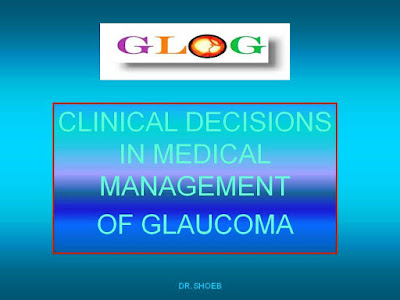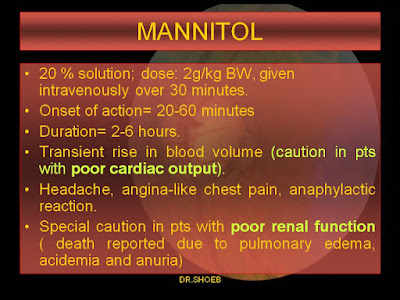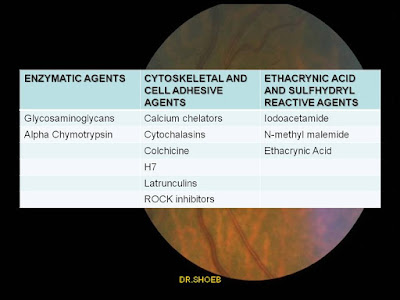Dear visitors, I am on a break for a few weeks. Hope to update the glog next year again. Till then have a joyous season and all the best for the new year.
Sunday, December 17, 2017
Friday, November 17, 2017
PIGMENTARY GLAUCOMA
PIGMENTARY GLAUCOMA
Pigmentary glaucoma (PG) is
a part of the spectrum of secondary open angle glaucomas. It is characterized
by abnormal amounts of pigment deposition on the trabecular meshwork,
associated with high intraocular pressure (IOP) as well as optic disc and visual field
changes. The association of pigment deposition and glaucoma was first reported
by Sugar in 1940. In some patients the pigment is dispersed throughout the
anterior segment without any typical glaucomatous changes. This condition is
called pigment dispersion syndrome (PDS). PG/PDS are more common in white myopic males. In blacks, the condition is less common, but PG is more severe compared to whites.
Secondary pigment dispersion is associated with ocular trauma, intra-ocular tumors or a malpositioned intra-ocular lens (IOL) rubbing against the iris pigment epithelium (IPE).
Pigment dispersion in the eye could be a
part of the natural process of aging. The infant eye, specially the trabecular
meshwork area, is non-pigmented. However, with aging, various grades of
pigmentation might become visible. PDS is characteristically
seen in young myopic males in the age group of 20-40 years. The condition
decreases in severity with age and may disappear later in life.
The pigment dispersion can be innocuous
and not cause any pathological changes in the eye. This condition as mentioned
previously is known as PDS. It is characterised by pigment deposition
throughout the anterior segment. This can manifest itself as the famous
Krukenberg Spindles (K.S). These are the vertically oriented deposits of
pigment on the corneal endothelium. K.S may vary from 1-6 mm in length and up
to 3 mm in width. The typical shape of K.S is assumed to be due to the aqueous
convection currents in the nasal and temporal halves of the anterior chamber.
Occasionally, the pigment might be diffusely deposited on the endothelium and
known as “pseudo-guttata”. K.S is not pathognomic of PDS. It can be seen in
other conditions like uveitis, ocular melanomas, iris and ciliary body cysts,
trauma, aging changes, exfoliation syndrome and postoperative conditions such
as an intra-ocular lens chaffing on the iris. K.S is more common in females, suggesting
a hormonal influence. Individuals with PDS who have K.S have been reported to
have a higher conversion rate to PG. Patients with intermittent showers of
pigment on exercise also have K.S more commonly.
 |
| Krukenberg spindle |
Pigment deposition might be seen on the
anterior iris surface, especially within the iris furrows. In asymmetric cases,
the eye with more pigment dispersion has a darker iris due to pigment
deposition, giving a heterochromic appearance to the eyes. The loss of pigment
leads to characteristic iris transillumination, giving rise to the appearance
of the so called “church window defects”. Radial spoke like transillumination changes
are commonly seen in the mid-periphery of the iris. However, in thick irises
the transillumination may not be seen, therefore, the absence of these features
do not rule out the diagnosis of the disease.
 |
| Church window defects |
The loss of iris pigment epithelium might
be associated with dilator muscles being more hyperplastic, giving rise to a
larger pupil on the more affected side. This anisocoria, heterochromia,
mydriasis and a darker iris in the more affected eye can mimic congenital
Horner’s syndrome in the fellow eye.
The pigment can also be deposited on the
lens zonules and the anterior or posterior capsules. The accumulation of
pigment at the junction of zonules and posterior capsule is called “Zentmayer
Line or Scheie’s stripe”.
 |
| Zentmayer line, also called Scheie stripe |
The pigmentation in the angles is seen
circumferentially; homogenously or irregularly and more prominent in the
inferior trabecular meshwork due to gravity. The pigment can be deposited at
Schwalbe’s line also, producing a thin, dark line resembling Sampaolesi’s line
seen in psuedoexfoliation syndrome. These pigmentary changes are eponymously
referred to as the “mascara line”. PG is more severe in the eye with greater
degree of pigment dispersion and trabecular pigmentation.
 |
| Angle pigmentation |
The posterior segment changes which might
be seen in PDS include lattice degeneration, retinal breaks and retinal
detachment. Retinal pigmentary changes have been reported in a patient.
 |
| Retinal pigmentary changes |
Patients of PG who undergo filtering
surgery may have pigment in the filtration blebs. However, whether this pigment
affects the bleb function is not known.
With increasing age there is a
progressive decline in the levels of pigmentation and IOP. In this so-called
“burnt-out stage”, the clearing of trabecular pigmentation starts from the
inferior angle, leaving a relatively darker trabecular meshwork superiorly.
This is known as the “pigment reversal sign”.
The burnt-out phase of PG appears to be
due to the increasing axial length of the lens which lifts the peripheral iris
away from contact with the lens-zonule bundle complexes which rub against the
iris to produce pigmentation. This leads to progressive decrease in the pigment
dispersion. Age related relative miosis might produce a functional iris bombe’
which may also lift the peripheral iris away from the zonular bundles. Another
explanation could be that once the zonules have rubbed the entire posterior
pigment epithelium of the iris, no further release is possible. Accommodation
may also play a role. Being more active in young patients, it may cause
increased pigment release. With aging, the accommodative power progressively
decreases leading to decreased pigment release and subsequent burn-out phase of
PG.
Mechanism of pigment dispersion:
An inherent weakness or degeneration of the
iris pigment epithelium was proposed as the pathogenetic mechanism by Scheie
and Fleischauer. Subsequent histologic studies did show iris changes such as
focal atrophy and hypopigmentation, delayed melanogenesis and hyperplastic
dilator muscles. Fluorescein angiography has revealed hypovascularity of the
iris which could contribute to the condition.
Campbell noted that the peripheral,
radial loss of pigment corresponds to the location and number of anterior
packets of lens zonules. Backward bowing of the peripheral iris could cause the
pigment iris epithelium to rub against the zonules and release of the pigments.
The backward bowing of the iris is
relieved by a peripheral iridotomy which led to the concept of “reverse
pupillary block”. This mechanism suggests that aqueous flows from the posterior
chamber into the anterior chamber against a normal pressure gradient. This flow
is enhanced by blinking and accommodation. Once in the anterior chamber, the
aqueous is unable to go back due to a one-way valve effect between the iris and
the lens, leading to a higher pressure in the anterior chamber which causes
posterior bowing of the peripheral iris.
Another theory suggests that certain elongated
anterior zonules encroach over the central visual axis, leading to rubbing of
more central parts of the iris to these zonules.
IOP becomes raised due to obstruction of
the trabecular meshwork by pigment granules and cell debris. Although some
congenital anterior chamber abnormalities have been seen in some patients but
they are not consistent enough to suggest a role in the development of
glaucoma.
Management:
Pharmacologic management with pilocarpine
may cause miosis and reduce the pigment shedding. However, it causes a
worsening of myopia and increases the risk of retinal detachment. The alpha-adrenergic
agonist thymoxamine has the advantage of producing miosis without cycloplegia. However,
it is not easily available. Other classes of drugs such as beta-blockers,
carbonic anhydrase inhibitors and prostaglandin analogues can control IOP but
will not avoid the mechanism of pigment release.
Laser iridotomy has shown to flatten the
iris and reduce the pigment release. Argon and selective laser trabeculoplasty
have also been effective in controlling IOP, however, their effect declines with
time.
In case IOP is uncontrolled by
conservative means, trabeculectomy is required. Compared to primary open angle glaucoma
patients, more patients with pigmentary glaucoma require surgery. Men require
it more often and at an earlier age. This characteristic could be related to the anterior
chamber depth. In males the anterior chamber is deeper (3.22 =/- 0.42 mm) compared to females (2.88 =/-
0.38 mm). This is related to more posterior bowing compared to females.
In those patients who have exercise
induced pigment release and IOP elevation, 0.5% Pilocarpine prior to exercise
is helpful.
Friday, November 10, 2017
NOVARTIS TALK= GLAUCOMA MANAGEMENT: PAST, PRESENT AND FUTURE
Alcon/Novartis organized a talk by their Medical Advisor, Dr Deepak Mukherjee, titled:"Glaucoma management: Past, present and future" at Hotel Le Meridien, Kota Kinabalu on the 9th of November, 2017.
The talk consisted of 2 parts: the first, dealing more with fixed dose combinations, but covering a large part of the medical management of glaucoma. While the second part of the talk focused on how to choose the appropriate drugs for the treatment of glaucoma. Dr Deepak highlighted the various studies and how they can guide us in deciding the first, second, third and fourth line of treatment, if required. According to him prostaglandin analogues (PGAs) form the first choice of medications as they produce the maximum percentage of intra-ocular pressure lowering. Beta blockers can be used as second line since they are usually combined with PGAs in fixed dose combinations. Alpha analogues are more efficacious than carbonic anhydrase inhibitors (CAIs) and so they are the third choice, while CAIs are probably the last option.
The talk was followed by a dinner.
Monday, October 30, 2017
PHARMACOLOGY OF ANTI-GLAUCOMA MEDICATIONS
It is prudent not to use these drugs in any patient who requires respiratory medications, has a heart rate less than 55beats/minute, has or has had heart failure, or has history of present or past use of antidepressant medications or impotence. A positive history of cardiac problems or symptoms is usually present in patients who have greater than first degree heart block.
Subscribe to:
Comments (Atom)
MRI IN GLAUCOMA (PART 1)
Magnetic resonance imaging (MRI) is currently not a standard investigation in most glaucoma patients. However, a number of studies have sh...

-
PEARLS FOR CORRECT ASSESSMENT OF THE OPTIC DISC Based on the article by PROF. BURAK TURGUT and available at the following link: htt...
-
PARAPAPILLARY ATROPHY The Optic Nerve Head (ONH) is often surrounded by different zones of atrophic-like changes occurring in th...
-
AQUEOUS OUTFLOW PATHWAYS Aqueous humor (AH) is produced by the non-pigmented epithelium of the ciliary body. It flows into the post...



































































